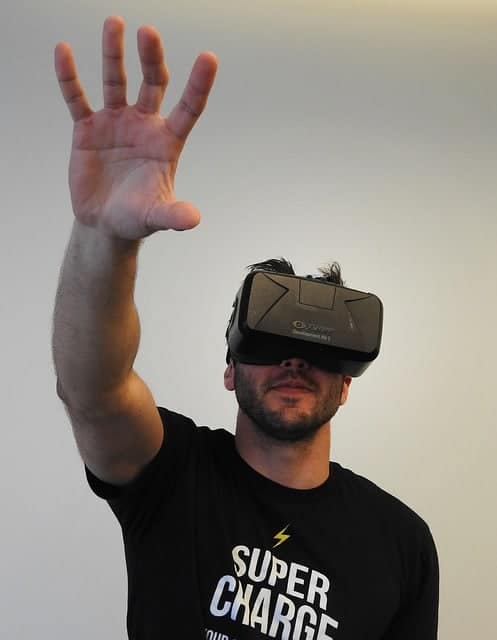Star Trek has been credited with predicting various technologies with startling accuracy. Warp drive and transportation beams might still be beyond us, but watch the way the Enterprise’s crew interact with the computer, and you will see marked similarities with any householder telling Alexa to switch on some music or put corn flakes on the shopping list.
Furthermore, many have suggested that the latest advances in 3D printing point to a future when the replicators by which crew members order synthetic food and drink that looks and tastes no different from the real thing could one day become a reality.
However, surely the weird and wonderful alien races from the world’s favourite science fiction series are purely the result of vivid imagination and fantasy. However, according to some, the future of humanity might bear more than a passing resemblance to one of the series’ most feared creations.
The Borg, for those who are unfamiliar with the lore, are a race that is part human and part machine. While there is no reason to believe we will adopt their unpleasant habit of “assimilating” entire worlds and star systems, there is certainly the possibility that as wearables continue to develop, the line will become increasingly blurred between where the individual ends and the technology begins.
Stepping into VR
2017 was very much the year in which virtual reality hit the mainstream. Wearables such as the oculus rift and HTC Vive were at the top of everyone’s Christmas lists, but perhaps the lower cost headsets that work with the latest smartphones provide the best clue of the direction in which the technology is heading.
VR is largely associated with gaming, and this makes sense to a certain extent. While the technology is still in its infancy, it has been pounced in by developers in the ultra-competitive online casino sector. Where there are so many options to choose from, the ability to step into a virtual casino and interact with a live dealer brings a whole new level of realism, not to mention a fantastic competitive advantage for the sites that are first to embrace the new technology.
Fitness apps
VR might have been the new craze for 2017, but fitness wearables like the Fitbit have already been around for 10 years. When it first came out in 2007, many-eyed the device with suspicion. Who wants something attached to their arm that will monitor their heart rate and track how much exercise they do? Ten years on, we know the answer – millions of people want exactly that, and the benefits it can bring go without saying.
While the first Fitbit looked clunky and gave indifferent results, the modern app is smaller, sleeker and smarter than ever. Even today’s Fitbit will look huge, slow and unwieldy another ten years down the road at the current rate of progress. It begs the question of whether
We will need to redefine “wearable” – after all, the Fitbit of tomorrow needs be no bigger than the microchip your dog or cat has tucked away under its skin.
Augmented reality
Electronics beneath the skin is only one aspect of our march towards a Borg-like tomorrow. The way we receive digital information is likely to be the next area in which we will see significant steps, and smart glasses gives us a glimpse of the future. Wearable technology is the obvious way of combining the physical and virtual worlds, and where could be a more obvious place to do so than in front of your very eyes? Some tech startup firms were already unleashing different smart eyewear forms that feed information to the user by way of microdisplays. Besides, they provide 120 degrees of vision.
Perhaps the most famous of these is Google Glass. The first iteration came on the market in 2013 and was quietly pulled two years later, However, now that others have shown it can be done, it is reasonable to assume that the all-new Google Glass 2.0 will be bigger and better. It is already receiving some rave reviews – not least for its practical applications in the manufacturing sectors.
Printed wearables
Inside, outside and before our very eyes. Is there anywhere else we can wear technology? According to those in the printed circuit industry, there is an obvious answer: to print electronic circuitry directly onto the skin and do away with the “device” altogether.
Developers in Japan say that wearable circuits are the natural progression of the Fitbit type monitors that are so popular today. Despite the technology being at an early stage of development, hypoallergenic sensors have already been created to be worn continuously without discomfort. They are so light that users soon forget they are there.
Science fiction, or inevitable development? One thing is for sure, 2028 will be a very different place to 2018.






